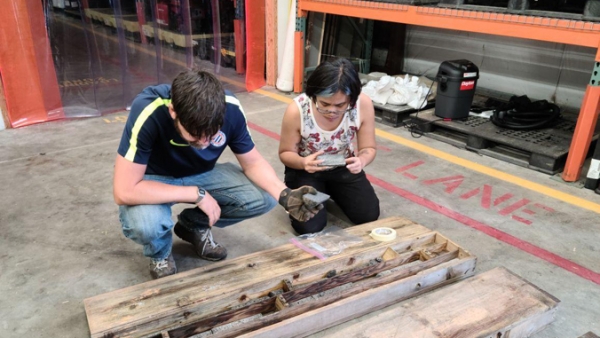Earth scientists from the University of Hawaiʻi at Mānoa were gifted a set of precious basalt samples collected by the U.S. Geological Survey (USGS) from the Kīlauea Iki lava lake between 1959 and 1988. Investigating these samples will provide new insights for understanding recent and future volcanic eruptions in Hawaiʻi.
“This set of lava core samples is one-of-a-kind. This type of multiple decade-long sampling of a magma body will unlikely be ever done again in Hawaiʻi or elsewhere,” said Tom Shea, earth sciences assistant professor in the UH Mānoa School of Ocean and Earth Science and Technology (SOEST).
In 1959, a large eruption filled an existing crater at the summit of Kīlauea with a lava lake. Over the next three decades, USGS drilled into this area to collect cores of cooling lava, noting the date, location and temperature of the rocks.
“This set of lava cores represents a remarkable, 30-year-long magma cooling experiment that enables us to track chemical changes in olivine through time, to see if they behave like faithful ‘crystal clocks’,” said Shea.
Read more at University of Hawaiʻi at Mānoa
Image: Tom Shea and Nabila Nizam with Kīlauea Iki cores. (Credit: University of Hawaiʻi at Mānoa)


